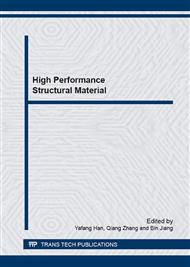p.518
p.523
p.529
p.534
p.540
p.546
p.551
p.557
p.562
Influence of Fe Content on Microstructure and Mechanical Properties of GH984 Alloy
Abstract:
GH984 is an economic alloy due to the elimination of Co and its containing more than 20% Fe. As a major constituent of GH984 alloy, the Fe reduces the cost, but promotes the precipitation of TCP phase. In order to get an optimum alloy with desired balance among structural stability, mechanical properties and cost, the influence of Fe content on microstructure and mechanical properties of GH984 alloy was investigated in this paper. The results showed that the Fe content had no obvious influence on the major precipitates which were spherical γ′, blocky MC and discrete M23C6 at grain boundary after standard heat treatment, except the γ/γ ́ misfit. However, during long-term thermal exposure at 750°C, the decrease of the Fe content retarded the precipitation of η phase and enhanced the structural stability. The Fe content had no obvious influence on the tensile strength and ductility. At condition of 700°C/400MPa, the rupture life had not evident change, but the elongation decreased, the fractural model exhibited mix-fracture model and the characteristics of intergranular fracture became obvious with increasing the Fe content. It can be concluded that the decrease of Fe content can improve the structural stability and ductility.
Info:
Periodical:
Pages:
540-545
Citation:
Online since:
April 2015
Keywords:
Price:
Сopyright:
© 2015 Trans Tech Publications Ltd. All Rights Reserved
Share:
Citation:


